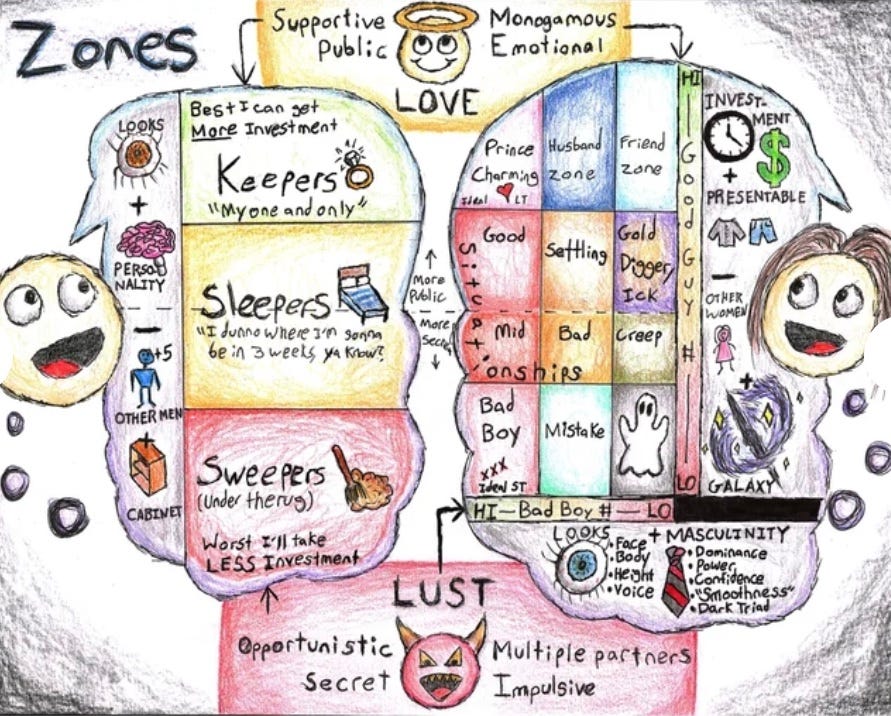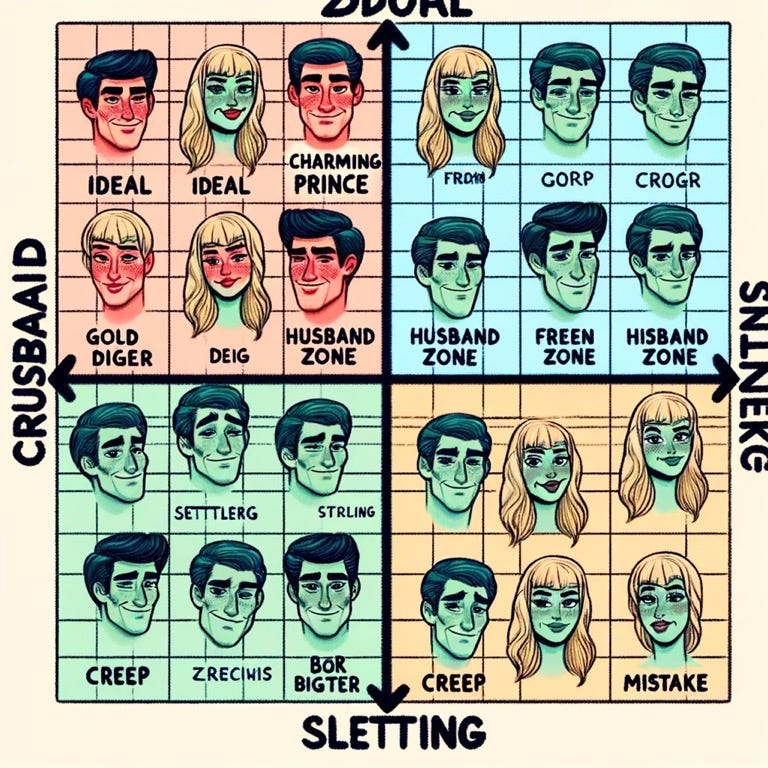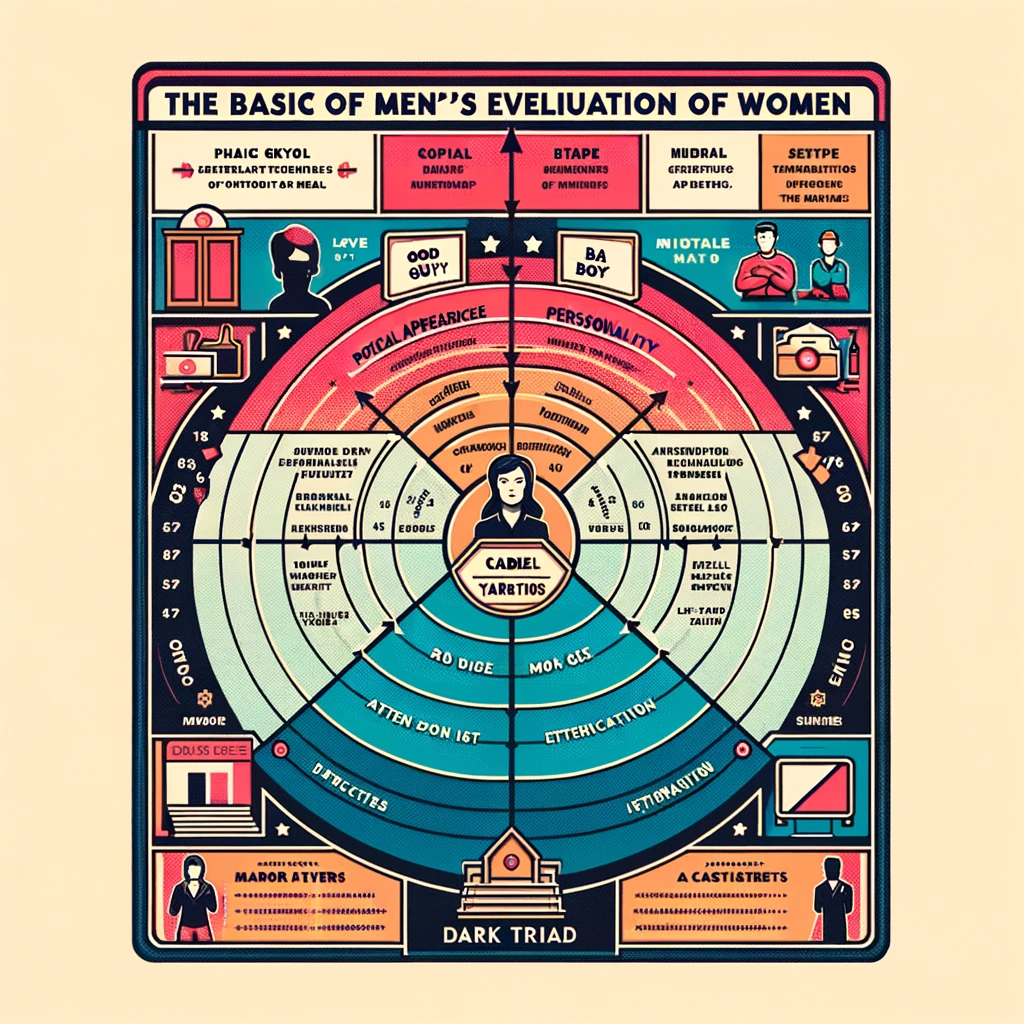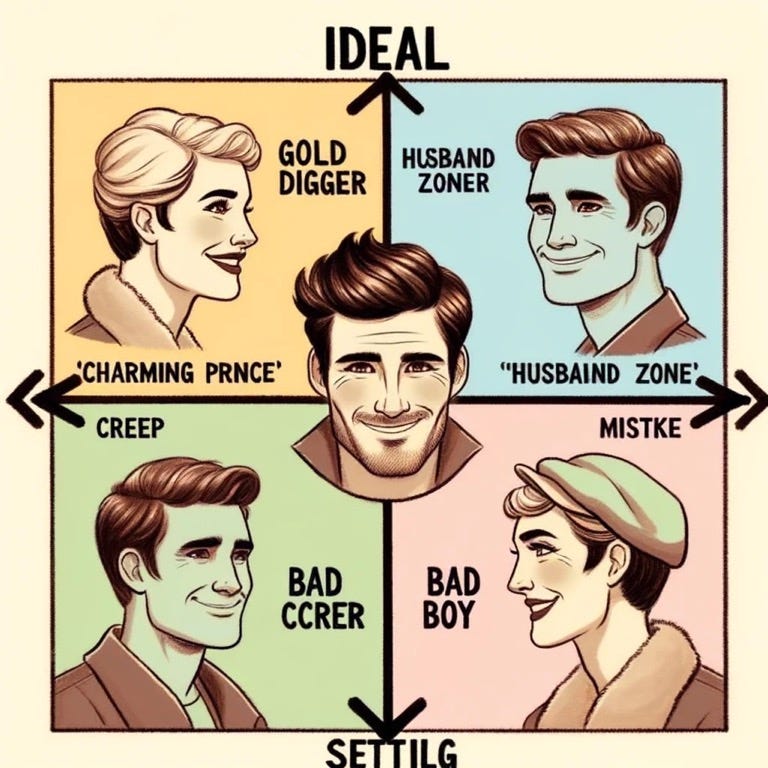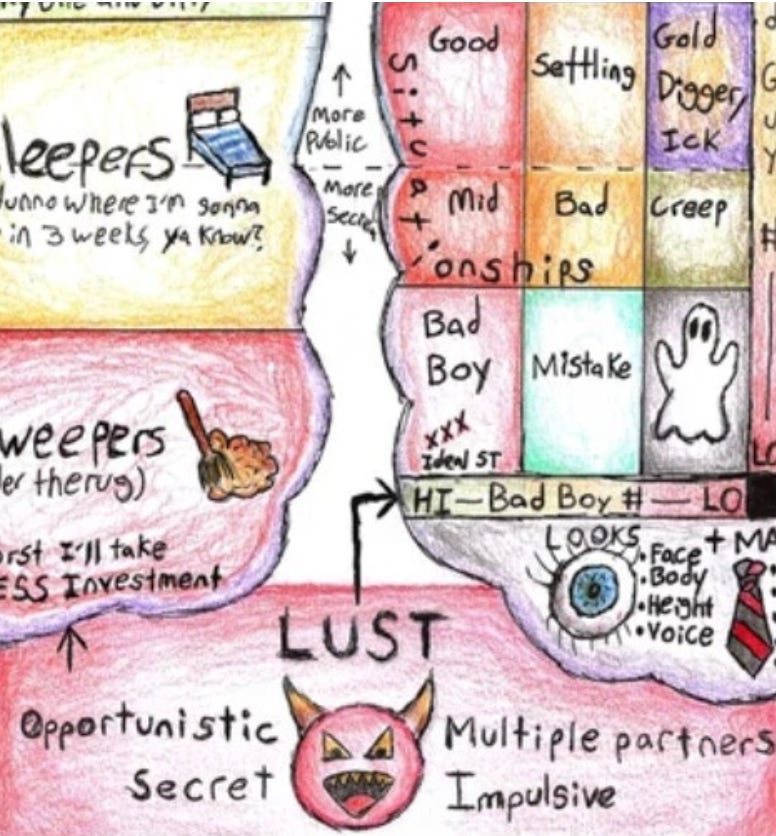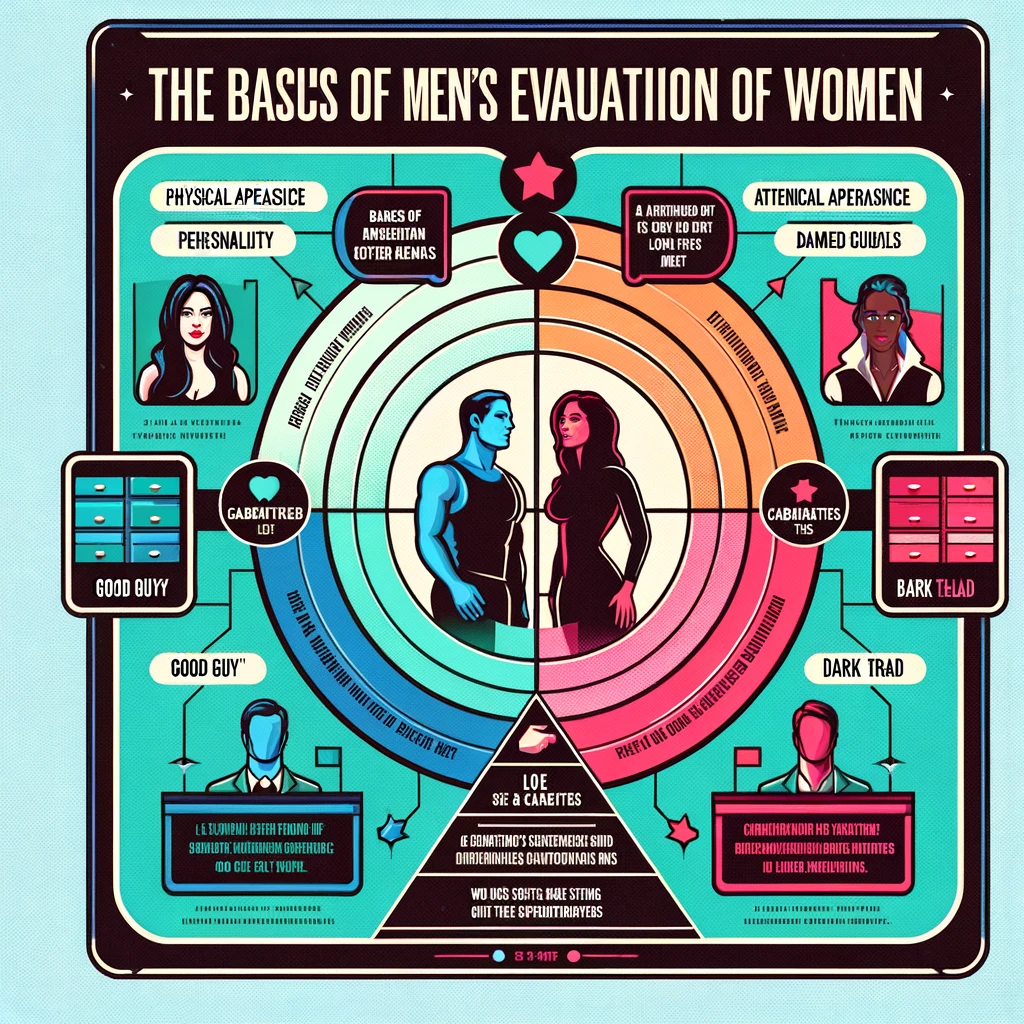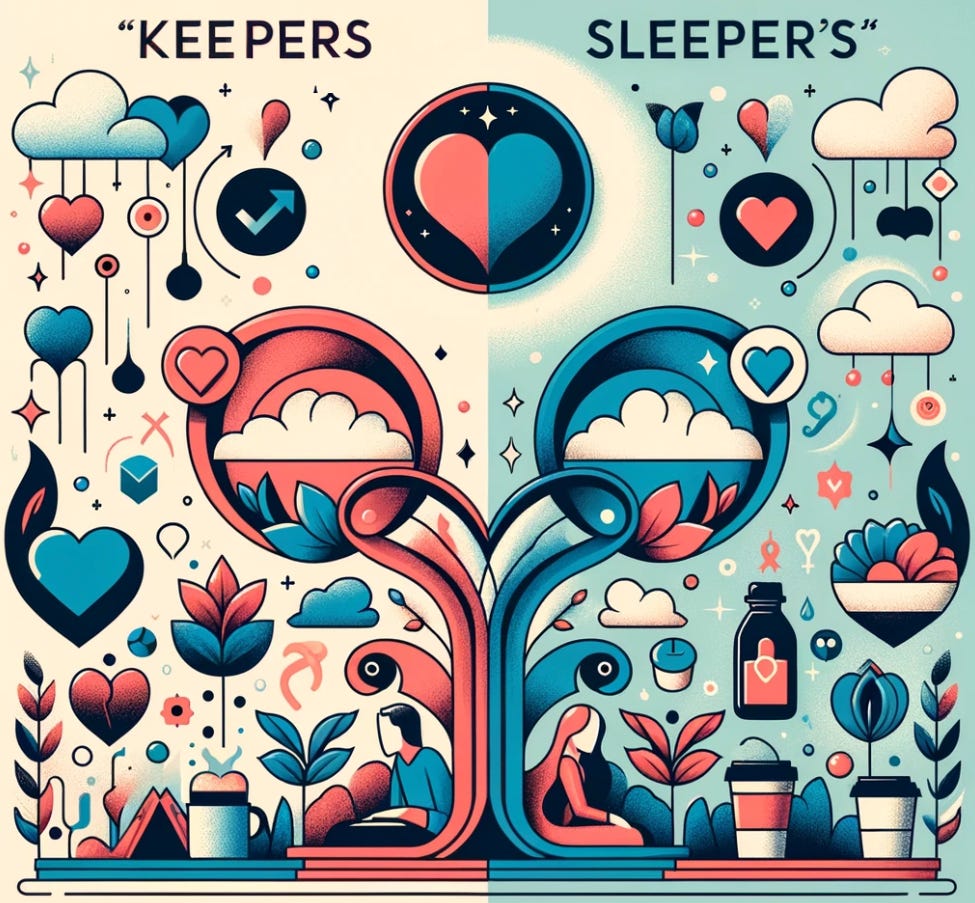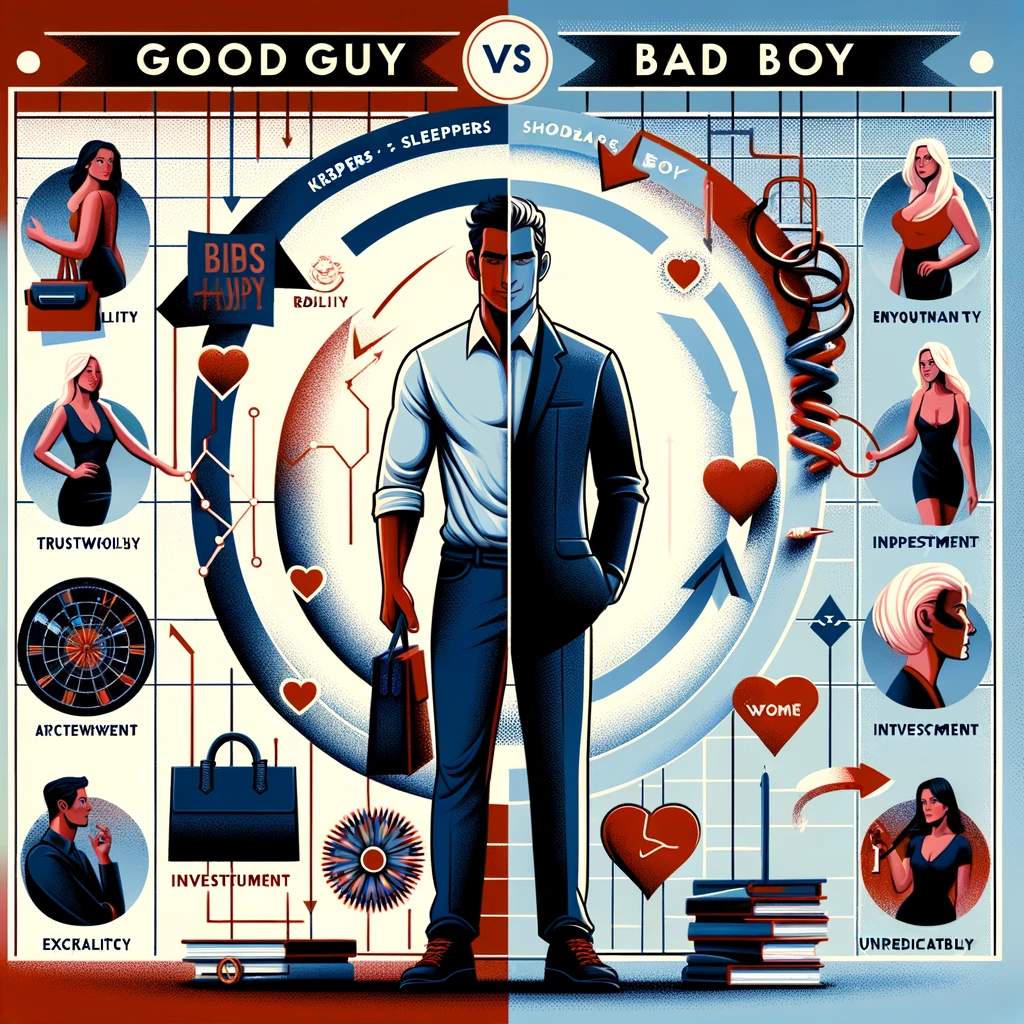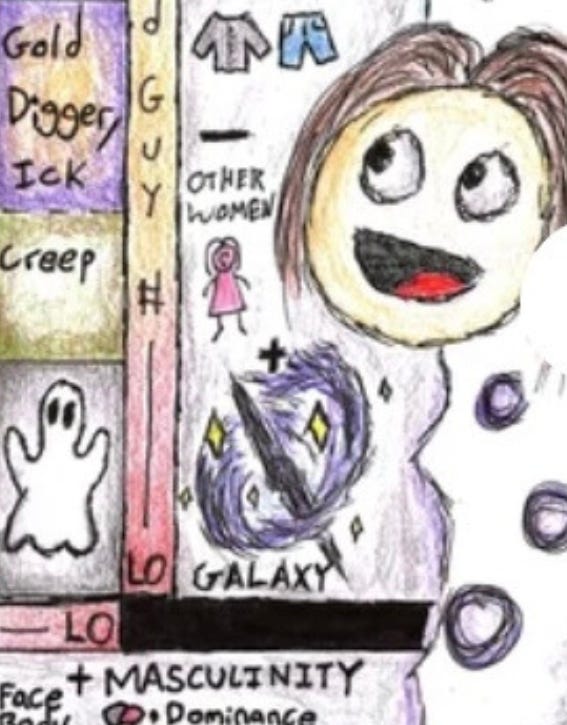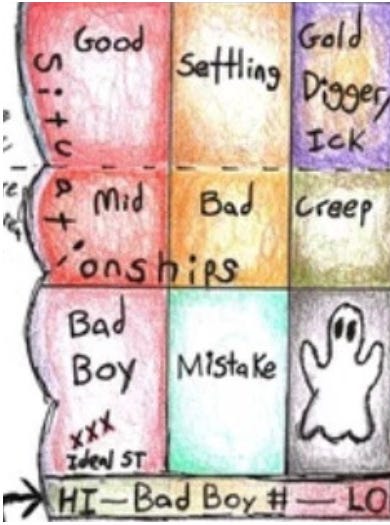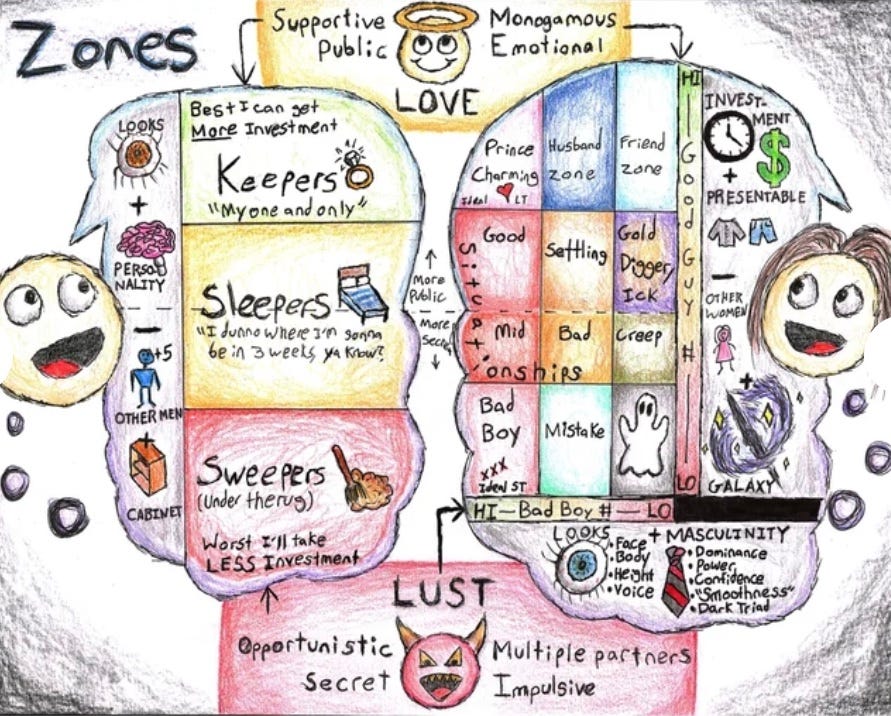Relationship Zones [Hoe_Math]
The chart presents a fascinating, albeit complex, portrayal of modern relationship dynamics. By understanding the different ways men and women categorize each other, we can better navigate them.
The Basis of Men's Evaluation of Women
The chart from the YouTube Channel ‘Hoe_Math’ is going viral and its offers an insightful and groundbreaking glance into how men and women categorize each other in relationships that is quite eyeopening. I’m not endorsing as its hetronormative but its fascinating and applies to trans, gay and straight relationships.
Men's Assessment of Women: Appearance, Character, and Social Interactions
Men, according to the chart, predominantly judge womxn based on three primary criteria: appearance, character, and their interactions with other men. This triad of factors forms the basis of men's assessment of feminine presenting, each carrying its distinct weight and implications.
Appearance: Men's initial assessment often revolves around physical attractiveness. This aspect, while superficial, plays a crucial role in initial attraction, influencing men's interest and attention.
Character: Men also consider a woman's personality traits, values, and behaviors. This encompasses her integrity, kindness, intelligence, and other personal qualities that define her character.
Interactions with Other Men: How a woman interacts with other men is also a critical component. This could reflect her social skills, loyalty, and the nature of her relationships with the opposite sex.
There’s also in the chart a cabinet signifying the lesser importance of other qualities in men's evaluation. This suggests that while other factors like career, hobbies, or background may be noted, they do not significantly sway men's overall judgment.
Women's Alteration of Classification
Women, as per your chart, can change their classification in men's eyes through various means. Enhancing appearance or personality, or altering social behaviors, particularly interactions with other men, can shift perceptions. However, minor changes like wardrobe choices or shared hobbies seem to have limited impact on improving their classification.
Women's Assessment of Men: The Dual Criteria System
In contrast, women's assessment of men involves a dual criteria system, balancing 'good guy' qualities with 'bad boy' attributes. This dichotomy creates complexity in understanding women's preferences, as they appear to seek a blend of both.
'Good Guy' Qualities: Attributes like kindness, stability, and reliability fall into this category, representing the more traditional, desirable traits.
'Bad Boy' Attributes: Traits such as dominance, assertiveness, and a hint of danger contribute to the 'bad boy' allure. These characteristics, often associated with the 'dark triad' traits of narcissism, Machiavellianism, and psychopathy, surprisingly attract women despite being generally undesirable in men's assessment of women.
Men's Strategies to Increase Attractiveness
To be more appealing to women, men are advised to enhance their physical attractiveness and embody traits of masculinity, including dominance and power. Understanding women's needs and desires also plays a crucial role. Interestingly, women are drawn to men who exhibit a combination of positive and negative qualities, finding a balance between the 'good guy' and 'bad boy' aspects.
Gender-Based Evaluation Systems: Love and Lust
The evaluation systems used by each gender pivot around the concepts of love and lust. In men, higher levels of value assigned to a woman correlate with love-focused relationships. Conversely, relationships based on lower value are predominantly lust-driven. Situationships, which are neither fully committed nor entirely casual, occupy a middle ground where emotional bonds exist but are not profound.
Implications for Women
For women, understanding how they are perceived in terms of appearance, personality, and social behavior is crucial to navigate relationships effectively. This awareness can help them avoid undesirable relationships and align themselves with partners who value them for more than superficial traits.
Divergent Preference Dynamics Between Genders
The dynamics of preference vary significantly between genders. Men typically prefer women who lack 'bad girl' traits, while women are drawn to men who exhibit a blend of 'good guy' and 'bad boy' traits. The perception of a man as somewhat dangerous, for instance, can increase his attractiveness to women, underscoring the complex nature of attraction.
Women's Navigation in Modern Relationships
For women, avoiding undesirable relationships requires a keen understanding of how a man perceives her looks, personality, and interactions with other men. This comprehension is vital for navigating the complex dynamics of modern relationships. By grasping how they are perceived and valued, women can make more informed decisions about their romantic engagements, steering clear of relationships that do not align with their desires and expectations.
Evaluating a Man's Investment in a Relationship
In the realm of modern relationships, assessing a man's commitment and value can be a nuanced process. A key indicator lies in observing his investment in terms of time, energy, money, and other significant factors. If a man falls short in these areas, it often signals a lack of genuine interest or value in the relationship. This realization might necessitate a reevaluation of the relationship or even a shift towards seeking someone who appreciates and values you more. Such assessment forms the bedrock of understanding relationship dynamics in the current dating landscape.
The 'Keepers' and 'Sleepers' Categories for Women
The chart simplifies the complex world of dating by categorizing women into groups such as 'Keepers' and 'Sleepers'. 'Keepers' are those who are deeply valued by men and often find themselves in committed relationships. They represent the epitome of mutual respect and investment. On the contrary, 'Sleepers' are women whom men like but do not fully commit to. These relationships may occasionally surface in public, but they typically remain casual, hinting at a lack of deep connection or long-term intentions.
The Concept of 'Sweepers' in Relationships
'Sweepers' represent the more regrettable, often hidden choices in a man's romantic endeavors. These are the relationships that men prefer to keep under wraps, as they usually do not align with their broader relationship goals. They could range from fleeting flings to encounters that are more about convenience than genuine affection or connection.
Women's Perspective: 'Good Guy' vs. 'Bad Boy' Traits
From a woman's standpoint, men are evaluated based on a dichotomy of 'good guy' and 'bad boy' traits. A high 'good guy' score, denoting investment and presentability, might earmark a man as reliable and trustworthy. However, without the 'bad boy' traits that fuel excitement and physical attraction, these men risk being relegated to the friend zone. Women often deduct points from a man's 'good guy' score if he is seen with other women, interpreting it as a lack of exclusive commitment. In contrast, a man's 'bad boy' appeal generally remains unaffected by the presence of other women.
The 'Galaxy' of Women's Preferences in Men
The chart also introduces the concept of the 'Galaxy', encompassing the diverse and individual preferences of women in evaluating men. This could include attributes like compatibility with children, shared hobbies, or other specific qualities that uniquely appeal to different women. These preferences play a subtle but significant role in how a woman perceives and values a potential partner.
The Importance of a Man's 'Good Guy' Score
A man's 'good guy' score is a crucial indicator of the level of trust and security a woman feels in the relationship. This score reflects the man’s ability to be supportive, enhance the woman's public image, and his commitment level. A high score in this category is essential for establishing a sense of safety and reliability in the relationship.
The Necessity of 'Bad Boy' Traits for Deeper Attraction
However, possessing only 'good guy' traits is often insufficient for creating a deep, romantic attraction. To ignite this spark, the presence of 'bad boy' traits is essential. These might include physical attractiveness, confidence, or a certain level of experience in understanding and dealing with women. The combination of both sets of traits often leads to a more rounded and compelling attraction.
The Allure of Experience and Dominance
In the intricate dance of modern dating, certain traits in men notably catch women's attention. Women often value men who have experience with other women, seeing this as a sign of desirability and relationship competence. Additionally, dominance in various fields, such as sports or leadership roles, is a significant attractor. This preference highlights a broader societal inclination towards individuals who display leadership and strength in their respective domains. Moreover, confidence and traits of the 'dark Triad'—narcissism, Machiavellianism, and psychopathy—though controversial, are linked to a perception of power and can inexplicably increase a man's attractiveness.
The Controversial Charm of the 'Dark Triad'
The 'dark Triad' traits, while often viewed negatively, can paradoxically lead to increased power, status, and attractiveness in men. This enhanced perception of power resonates with a certain segment of the dating population, making these men more appealing despite the potential downsides. This phenomenon underscores the complexity of attraction, where traits traditionally viewed as undesirable can sometimes be the very factors that heighten a person's allure.
Beyond Physical Appearance: The Case of Henry Kissinger
The chart dismantles the myth that physical appearance is the sole determinant of a man's attractiveness. Historical figures like Henry Kissinger, who may not have conformed to traditional standards of attractiveness, became highly appealing due to factors like status and power. This instance illustrates that charisma, influence, and the ability to wield power can significantly amplify a man's attractiveness, often superseding physical attributes.
The Nine Zones of Women's Evaluation of Men
Women's evaluation of men is categorized into nine distinct zones, each defined by a mix of 'good guy' and 'bad boy' traits. These zones range from highly desirable to undesirable, with each zone representing a different combination of traits and consequent attraction levels. Understanding these zones can provide invaluable insight into the dynamics of attraction and the potential for relationship development.
The 'Invisibility' of Lacking Traits
Men who neither exhibit 'good guy' nor 'bad boy' traits can find themselves virtually unnoticed in the dating scene, becoming 'ghosts' in the social and romantic landscape. This lack of defining characteristics often results in a lack of presence or memorable impact, underlining the importance of having distinguishable traits in the dating arena.
Negative Perceptions of Imbalanced Traits
Conversely, men who possess 'good guy' traits but lack 'bad boy' qualities can be perceived negatively. A low 'good guy' score might categorize them as 'creeps,' while a high score without any 'bad boy' traits can attract 'gold diggers' if they are wealthy. This imbalance highlights the complex nature of attraction, where having a one-dimensional personality can lead to undesirable categorizations.
The 'Friend Zone' and the Balance of Traits
A high 'good guy' score without 'bad boy' traits often results in men being placed in the 'friend zone.' In these cases, while women might value their friendship and company, they lack romantic attraction. This scenario exemplifies the need for a balance between 'good guy' and 'bad boy' traits to create a more comprehensive and appealing romantic profile.
Discrepancies in Attraction: A Gender Perspective
There is often a notable discrepancy between what men find attractive in women and what women find attractive in men. This divergence can lead to confusion, especially among men, as the traits they value in women do not necessarily correlate with what makes them attractive to women. Understanding this difference is crucial in navigating the modern dating landscape.
The Essence of Attraction: Finding the Right Balance
Ultimately, the essence of attraction lies not just in being a 'good guy' but in balancing these traits with elements of 'bad boy' appeal. This combination can include physical attractiveness, dominance, and confidence. Striking the right balance is key to crafting an alluring persona that resonates with potential partners, transcending traditional notions of attraction.
Enhancing Masculinity: Beyond Physical Limitations
In the complex world of modern dating, physical appearance plays a significant role, but it's not the be-all and end-all. For men unable to change certain physical aspects, focusing on increasing masculinity can be a game-changer. This means improving fitness, refining style, and overall enhancing appearance. Such efforts can notably boost attractiveness, potentially elevating men into the more desirable 'husband zone' or even the elusive 'prince charming zone.' It's about maximizing what you can control – turning limitations into opportunities for self-improvement and increased appeal.
The Pitfalls of Being a 'Medium Bad Boy'
The chart of modern dating reveals a striking truth: being labeled as a 'medium bad boy' without any 'good guy' traits can be detrimental in the eyes of women. This categorization often leads to being seen as a regrettable choice, akin to a decision made in a moment of impaired judgment. This is especially true for men who lack general appeal or niceness, as it positions them in a zone of fleeting attraction without the substance for lasting connection.
Navigating 'Bad Situationships'
Men perceived as moderately 'bad' but scoring low on 'good guy' traits may find themselves in what’s termed a 'bad situationship.' In these dynamics, women may hesitate to commit, deterred by the lack of sufficient attractiveness or positive qualities. This zone is marked by ambiguity and an unlikelihood of developing into a stable, long-term relationship, highlighting the need for a more balanced approach to personal development and attraction.
The Consequences of Exceeding 'Good Guy' Traits
Surpassing the halfway mark in 'good guy' traits can lead to relationships based more on settling than on passion. In these scenarios, a woman might choose a man for his stability and security rather than for excitement and romantic fulfillment. It reflects a pragmatic, if somewhat uninspired, approach to partnership, where reliability trumps allure.
The 'Friend Zone': When Kindness Isn't Enough
Maximizing 'good guy' traits while lacking 'bad boy' elements places men at risk of being relegated to the 'friend zone.' This zone is characterized by appreciation for kindness and dependability but lacks the spark of romantic or sexual attraction. It's a respectful yet platonic categorization, underscoring the necessity of balancing different traits to achieve a more attractive, well-rounded persona.
Women's Ideal Relationship Types: The Dichotomy of Desire
According to this framework, the ideal relationship types for women oscillate between the 'prince charming' for long-term commitments and the 'bad boy' for short-term thrills. This dichotomy underscores the complexity and diversity in women's preferences, highlighting the challenges men face in understanding and meeting these varied desires.
The High Blenders: Balancing Traits for a Polygamous Lifestyle
Men who successfully blend high levels of both 'good guy' and 'bad boy' traits might find themselves leading a polygamous lifestyle, engaging with multiple women in various forms of non-committed relationships. This lifestyle choice reflects the effectiveness of possessing a balanced mix of traits, appealing to a broader spectrum of women's preferences, albeit leading to a more complex and unconventional romantic life. Whether aiming for the stability of the 'husband zone,' the allure of the 'prince charming zone,' or the excitement of the 'bad boy' experience, the key lies in self-awareness, personal development, and a strategic approach to attraction and relationships.
The Reality of Self-Improvement and Dating Perceptions
In today's dynamic dating world, understanding relationship dynamics is more crucial than ever. The 'zones' concept in relationships is a pivotal framework for comprehending how individuals categorize potential partners. This understanding is not just about self-improvement; it's about recognizing that despite one's best efforts, how others categorize us can be more about their preferences than our shortcomings. This realization is particularly significant for women, who often bear the brunt of these categorizations. When a man consistently places a woman in a lower category, it is an indication of his valuation and intentions, not her worth. Acknowledging this can prevent prolonged emotional investment in a relationship devoid of mutual appreciation.
Understanding Categorization in Relationships
The categorization process is central to understanding modern dating. Men often evaluate women based on looks, personality, and how much attention they pay to other men. These evaluations range from 'Keepers,' women seen as long-term partners, to 'Sweepers,' regrettable choices that are often kept hidden. Conversely, women assess men based on 'good guy' and 'bad boy' traits, each contributing differently to their attractiveness. This dual evaluation system results in women being placed in various zones, from the highly sought-after 'Prince Charming' zone to the less desirable 'Friend Zone'.
The Dynamics of Relationship Zones
This zoning phenomenon leads to diverse relationship dynamics. For instance, a man might prefer to keep several women in lower categories rather than committing to one, reflecting a preference for variety. On the other hand, women might choose a part-time relationship with an 'exciting' man over a stable, full-time relationship with a 'mid-level' man, showcasing a preference for excitement over stability. These choices reflect not just individual preferences but also broader societal and cultural dynamics.
Navigating the Dating Landscape with the Zones Framework
It's important to note that the zones framework is a guide, not a rulebook, for navigating the complex world of modern dating. It provides clarity on how personal values and preferences manifest in relationships. Individuals have the autonomy to make choices aligned with their values and desires. The zones map helps in understanding the underlying dynamics of why we are attracted to certain types of people and why some relationships succeed while others fail.
The Importance of Self-Value in the Dating World
As we navigate these zones, it's crucial to remember that our value does not diminish because of someone else's inability to recognize it. Understanding these dynamics is key to finding happiness and fulfillment in our relationships. Whether our experiences fit neatly within the zones or defy them, this understanding can empower us to make better choices in our pursuit of meaningful connections.
Conclusion
The chart presents a fascinating, albeit complex, portrayal of modern relationship dynamics. By understanding the different ways men and women categorize each other, individuals can better navigate the dating world, aligning their choices with their personal preferences and values. In a landscape where perceptions and evaluations wield significant influence, this chart serves as a crucial tool for deciphering the intricate dance of modern relationships.


